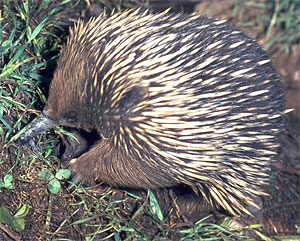Egg-laying Mammals | ||
In some ways, monotremes are very primitive for mammals because, like reptiles and birds, they lay eggs rather than having live birth. In a number of other respects, monotremes are rather derived, having highly modified snouts or beaks, and modern adult monotremes have no teeth. Like other mammals, however, monotremes have a single bone in their lower jaw, three middle ear bones, high metabolic rates, hair, and they produce milk to nourish the young.
Order: Monotremata
Scientific name: Monotremata
Class: Mammalia
Phylum: Chordata
Kingdom: Animalia
|
Featured post
Biology cell mcq
1. Who discovered cell in 1665? a) Robert Hook b) Robert Crook c) David Thomson d) Marie Francois Ans. a) 2. Name an Organelle ...
Wednesday, 1 January 2020
Monotremes
Subscribe to:
Post Comments (Atom)

No comments:
Post a Comment